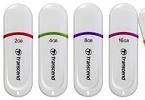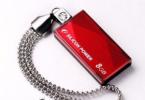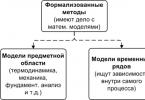Making the whole car in one factory, from body panels to bolts and nuts, was common during the Soviet planned economy. All the rest of the world's leading automakers who lived in the world of capital, meanwhile, have long come to the conclusion that it is much more reasonable and profitable to distribute orders for separate groups of spare parts among a variety of specialized enterprises. In such a situation, the car factory itself remains main function— Assembly of all this variety in the whole car.
How the auto industry works
A large automobile company can have many such factories at once, and at the same time on all sides of the globe. Diversity model range, production volumes and specific features regional sales markets important for the automaker, including local legislation, depending on the situation, are forced to constantly redistribute production.
Therefore, it happens in every way. There are plants that produce only one car model, while others assemble almost the entire production range of the company, still others specialize in certain configurations, and still others generally produce several almost identical cars for different brands ... Because of this, the same model can simultaneously release in several places at once. At the same time, identical products from different factories can both exactly repeat each other, and quite coolly differ in details. Take, for example, the European American version Jeep Wrangler... But this is not about that.
All these assembly lines require for their work a regular supply of a huge amount of spare parts, which, as we already know, are produced by other enterprises. What are they, you ask? Usually body parts, engines, transmission units and suspension arms are produced at specialized factories owned by the same company. Yes, and the production of various small things is sometimes placed at the facilities located under the native wing of the automotive corporation. But all this is not at all necessary. Because if necessary, your order for any components automotive firm can be placed somewhere completely on the side or even with global competitors, if this corresponds to common sense and financial calculation.
In today's automotive industry, relationships are so mixed up that a finished four-wheeled product that comes off the assembly line could easily be the brainchild of all five inhabited continents and several well-known automotive brands simultaneously. And any specialized plant that produces, say, shock absorbers, ball joints or engine control electronics, as a rule, delivers its components immediately to many automotive conveyors.
By the way, such enterprises also often order smaller components of their parts from someone else. As a result, the abundance of suppliers sometimes gives rise to a situation in which the same part for the same car model is produced by several different enterprises at once. It also happens that over time, suppliers change. As a result, an abundance is formed around almost any car. identical spare parts with different part numbers. True, sometimes they show some differences, but not always they interfere with interchangeability.
Automotive parts manufacturers supply their products, of course, not only to conveyors: some of them immediately go to warehouses and spare parts stores. Moreover, over time, completely outside manufacturers who do not have assembly line not the slightest relationship. Result - wide selection from the most different firms according to the most different prices. And most different quality.
Wealth of choice
However, for the owner of a new car for the first couple of years or even more, depending on the warranty period, the breadth of this choice is of no interest: the search for spare parts is not yet his headache. All this time for maintenance and repair, he goes to official dealer, where he is required to put only original spare parts. True, sometimes there are delays in deliveries, which is why the one who gave his iron horse in warranty repair a motorist can again remain a pedestrian for a long time, but these are already maintenance costs.
Later, when the car is out of warranty, the repair time can be greatly reduced, especially if you search for spare parts on your own and in advance. And then all the wealth of choice will appear in all its glory.
Putting original spare parts that correspond to the year of manufacture, configuration and place of assembly is not only a sign of good manners, but also the most hassle-free way to service a car. The likelihood that due to new part half a car will have to be finalized with a file, here it is practically zero. True, get original parts not as easy a task as it might seem. The main limiters here, as usual, are time and money. Especially when it comes to rare cars, which have never been officially sold in our country. Firstly, the delivery time of some iron squiggle can stretch for many weeks, and secondly, the price tag for it can reach the moon.
However, sometimes they put a non-original ... to improve the factory design. For some brands, this is a common practice. Why not, if some of their components and assemblies have become the talk of the town due to their legendary unreliability?! And the tuning industry, which sets itself the task of finalizing serial designs for specific tasks, is also not in vain trying ...
When suddenly an urgent field repair of a machine is required somewhere on the edge of civilization, the issue of spare parts becomes even more acute. In conditions of limited resources, any option that allows you to quickly continue moving will be suitable. At this time, sudden technical insights usually happen. Moreover, there are reasons for them and they are hidden in the scheme of organization of the world economy already outlined above. automotive industry.
Standard elements
Despite not all the differences, the cars of the most different models, brands, countries and eras contain a much larger number of identical details than it might seem at first glance. The fact is that among the spare parts there are quite a lot of standardized elements.
First of all, these are bearings. Bearing plants produce their products in colossal runs according to international standards, and not only for the automotive industry. Therefore, in addition to the branded part number certain brand, any bearing has its own through number, which depends only on its type, dimensions and materials.
This number is the same for all manufacturers. Constructors, developing another new unit, are guided by these standards and start from ready-made sizes and characteristics. Therefore, there is nothing surprising in the seemingly incredible, but reliable fact that the Volga and Land cruiser You can find exactly the same bearings, albeit from different manufacturers.
In fact, any bearing can be selected, knowing its type, external and internal diameters, width and location of the grooves for the retaining rings, if any. Sometimes the selection is not easy: some sizes are really rare, but still most of them in the automotive industry regularly roam across brands, countries and generations. With tapered bearings, there is one more little trick: with the same mounting dimensions of the cages, they can differ in the angle of inclination of the working cone - and in terms of nomenclature, these will be completely different products. But in practice, there are no restrictions for their mutual replacement. The main thing after installation is not to forget to adjust them correctly.
Oil seals are also standard parts. But, unlike bearings, they are not subject to international standards, but only sectoral ones. This complicates the selection a little, but it does not interfere at all with finding identical rubber products, for example, in a Jawa motorcycle and a Suzuki Alto small car.
So, as in the case of bearings, in the absence of fish, it is usually possible to choose a suitable oil seal according to its size. At the same time, it is important to remember that for many of them the working edge is made specifically for right or left rotation - and it is better not to confuse them in places, otherwise incorrect installation seal may leak. There are also universal oil seals, for which it does not matter where the shaft is spinning.
To find suitable replacement with another catalog number among rubber products, it helps that, firstly, seals that are identical in size can differ in the number of working edges and the presence protective boot. Second, the thickness this case the least important of the dimensions and can almost always be traded off, especially if the replacement is thinner than the original. The main thing is to remember that additional edges and protections, if they are in the original, are still needed for some reason, and the life of a “reserve player” of a simplified design can turn out to be bright, but short. However, it is likely to be enough to get home.
Cardan crosses can also be classified as universal standardized parts. They have the main determining size - the diameter of the cups of the cross. The second important figure is the distance between the locking rings in the fork cardan joint. AT modern cars the crosses of the transmission shafts, with the rarest exception, after pressing the cups, are centered and mounted on their seats using spring split rings in special grooves.
This attachment can be of two types. In one case, each groove is machined into inner surface landing well plugs, and you need to put an internal spacer ring into it. In the other, the groove is located on the cup of the cross on the outside, and the ring is required, respectively, the outer one, which expands during installation.
The second option, where the ring sitting on the cup rests against the inner plane of the fork, is more convenient for mounting and dismounting, and it holds more securely, since it is almost impossible to spoil such a “lock” in the process of replacing the cross. The first option is more demanding on the accuracy of the work, since the locking rings may not fully open due to dirt or burrs in the grooves, and these grooves can be damaged when pressing.
But there are more options for the selection of substitutes. First, you can use both types of crosses that are appropriately sized, while slotted cups are required in a design with external retaining rings. Secondly, if necessary, you can also install “shorter” crosses, and compensate for the backlash by evenly placing washers or coins of a suitable diameter on the ends of the cups. By the way, sometimes it is useful to put non-native crosses for prevention purposes. For example, if in the original they are maintenance-free, but you want them to be with grease fittings.
A variety of pipelines practically do not cause trouble with an impromptu replacement. Handy hoses, ingenuity - and now it's already laid in place new highway for air, fuel or coolant. The main thing is that the connections of the new insert coincide with the remaining standard part, there should be a sufficient section and suitable material.
But for the rest of the spare parts, there are almost no random coincidences, and those that do are quite natural for the reasons that were already mentioned at the beginning. Without any intent and connection, only the cones of different steering tips and ball joints may turn out to be identical. That's just not the fact that the rest of the dimensions and attachment points they match.
However, if there are unexpectedly many coincidences, then this is also not without reason. On the other hand, what difference does it make to us? It is even better that the manufacturers of units, supplying the same parts for different car brands, greatly simplify life not only for themselves, but also for users. It is only important to correctly identify the spare part and find possible analogues. This information, of course, automakers do not particularly advertise. But all the secret sooner or later becomes clear.
Little tricks
Nowadays, access to intimate knowledge has become easier: the user experience of technically literate regulars of specialized Internet forums and access to online catalogs helps out. Oh, how many wonderful discoveries we have, as they say. Because while studying the topic of interchangeability of parts, you never cease to be amazed. On the one hand, you meet an unexpected similarity of elements in completely heterogeneous brands, such as, for example, Daihatsu and BMW. On the other hand, irreconcilable differences in the design of some node in one machine different years release. At the same time, the same parts are from the same factory, but packed in boxes different brands often vary greatly in price. What do you want? Marketing! And this is where knowledge makes it possible to save money without compromising technology. By the way, products under the brand name of the manufacturer itself usually turn out to be the most affordable of the “original”. It is only important to know exactly who produces for whom and what.
However, usually the main suppliers of each car brand known to those who maintain their own car. It's easy to remember, almost like poetry: you say Aisin - you mean Toyota, you say Chrysler - you mean Mopar. Well, and so on. And it is important to know this also because a huge share of the spare parts market is occupied by a mass of “non-original” - parts of very different quality produced by third-party companies. And everything can grow in this field. From high-quality products, sometimes even superior in their properties to "native" spare parts, to low-quality imitation, only outwardly vaguely reminiscent of what should be. The range of prices is appropriate, but it is impossible to focus on only one price. Knowledge and collective user experience are also important here. But this is a topic for a completely separate study.
Trying to improve their cars, manufacturers are constantly making some changes to its design. This leads to the fact that when trying to fix their vehicle, the car owner needs to spend a lot of time looking for the right part. But how do you know if a spare part fits the car, quickly and efficiently?
Vehicle VIN
In order to clearly identify any car model with all its characteristics, manufacturers must indicate on the body special code, which encodes all the basic information about vehicle: country of manufacture, type of engine, transmission, etc. Sometimes this code is duplicated several times, and you can find it in such places:
- under the hood (required);
- on the driver's door pillar;
- on the floor near driver's seat;
- on the windshield from the driver's side.
Using this unique code, you can find any part on specific car. Although different manufacturers treat him differently and introduce their own, additional designations, which sometimes also need to be known when looking for a spare part.

How to find out if a part fits a car
Many car owners simply take the part with them to the store in the hope that an experienced salesman will tell you which part to buy. But it should be borne in mind that car models that are identical in appearance and characteristics are produced at different factories. Accordingly, it is better to purchase a spare part produced in the same factory as your car. This is the only way to guarantee maximum component compatibility. This is possible due to the fact that each part is also assigned a unique number, which is responsible for its compliance with a specific VIN code, that is, a car. But it is very difficult to decipher the manufacturer's codes on your own, that is why there are special bases- using them you can find out everything about your vehicle.
A good example of design borrowing is the first car built in the USSR in the late seventies by the Volga Automobile Plant. The first Zhiguli were, in fact, the first Russian foreign car produced under the Russian flag, but assembled, and therefore had big list interchangeable parts.
General laws of physics for all
When developing a car design, factory developers mainly use the general theory of calculating the strength and reliability of the structure, and it is no secret that in the same class of cars there can be many similarly sized parts.
Say, in an engine of the same displacement, pistons, piston pins, rings, liners, valves and valve guides, oil seals can be similar in size. crankshaft and valve seals and other similar items.

Practical benefits of interchangeability for the user and the car manufacturer
Often automotive companies when developing a luxury model, they use a number of interchangeable parts from other, already long standing on the assembly line and cheaper models. This is beneficial for the manufacturer, since there is no need to expand production, using most of the typical components and parts of a car that are common to many brand models.
Motorists do not always take advantage of this and order the necessary spare parts specifically for their model, believing that it will be an “original” from the manufacturer. However, the plant, simply physically unable to produce all the parts for assembling a car at its facilities.
The cost of spare parts, and therefore their interchangeability with less prestigious models, can significantly reduce this cost item.
For example, pistons and piston rings, block heads, liners, valves and guide bushings, filters and other items, the Kolbenschmidt company produces for stock cars: Audi, Volkswagen, Seat, Skoda, BMW, Rover, General Motors, Opel, Mercedes, Chrysler, Porsche, Ford, Jaguar, Fiat, Nissan, Volvo, Saab, Peugeot, Citroen, etc. These are huge selection spare parts, where there are many similar parameters and, knowing the basic ratios and dimensions, you can choose necessary details from another car brand.
For more than 80 years of its existence, Kolbenschmidt MSI Gmbh has proven a high degree of reliability and the quality of its products, for which they are intended, will be equally High Quality. Thus, the rings bought for BMW, but selected from the catalog, say, Citroen will be no worse, and you can put them in the engine without fear.
How to select parts
When selecting interchangeable parts, you only need to know exact dimensions details and take into account temperature regime engine and the type of fuel used.
For example, when selecting rings, it is necessary to know the diameter of the cylinder and its other exact parameters in order to select rings based on them:
The interchangeability of parts among cars of the same brand is in the hands of the owners of the "luxury" series, as this reduces the cost of their maintenance. So, for example, the repair of the chassis and engine (series 1G-FE) is much cheaper when using spare parts from cars manufactured under by Toyota, as their parts are mostly interchangeable with Lexus. So for repairing Lexus IS spare parts are suitable from: Toyota Mark-2 (since 1998), Toyota Crown(since 1998), Toyota Cresta (since 1998), Toyota Chaser(since 1998).
Examples of compatibility of spare parts from Russian cars for the repair of foreign cars
- Anthers guide calipers from 2108
- Rear racks from VAZ 2108 with springs
- Anthers of steering tips VAZ-08-09 on "Audi 100" 44th
- Rear struts with springs from VAZ 2108
- Audi80 - engine mount from "Niva"
- Hood gas stop for Audi A4 B5 from back door"Barguzina" (it will take a little refinement)
- speedometer cable VAZ-21213 for Audi 100 (without shirt)
- A4 B5 / A 80 B4 - outer CV joint boot from "Niva"
- A80 - starter solenoid relay from VAZ-2110, etc.
For Opel "Cadet" and "Ascona"
- 1, 3 l - piston rings from VAZ 2101, connecting rod liners from Tavria
- -1.2 l - piston rings vaz 21011, liners in a "circle" from Moskvich -408
- 1.6 l - piston rings from VAZ 21011 (last repair), etc.
Knowing the exact data, say, of piston rings, you can pick up rings from other models that are more affordable.
For example, for BMW engines piston rings size 1.75-2-4 can be picked up from Audi, Volkswagen, Fiat, Ford, Mercedes, Toyota, Mazda, Renault, Peugeot.

From the above examples, we can conclude that knowing the parameters of the part well and carefully studying the spare parts catalogs of other brands, you can significantly reduce the cost of car maintenance and repair.



